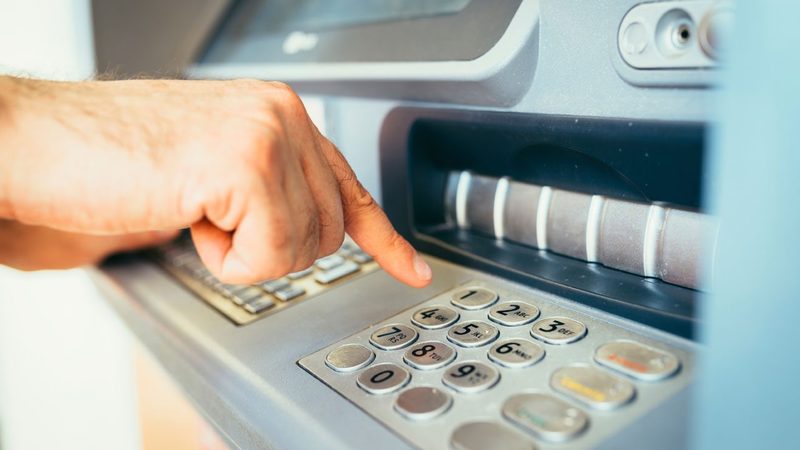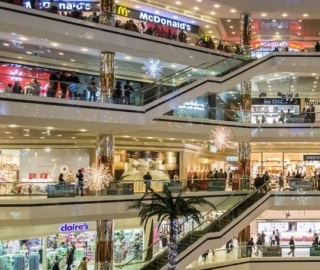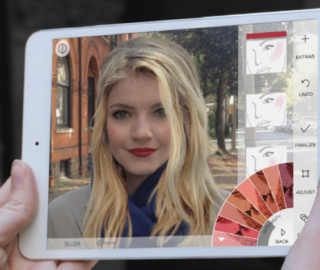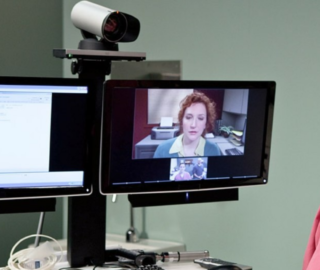
We’ve noticed a lot of interest from our readers for our pieces dealing with AI applications in the finance and banking sectors. New applications for artificial intelligence often seem to develop by transferring an existing use-case in a related field, and this might be the case with AI applications for ATMs as well.
Banks usually need to operate a huge network of ATMs, some of which might be in remote locations. As such, an ATM breakdown could potentially cause a lot of inconvenience to customers and large ATM manufacturers, such as Diebold Nixdorf and NCR, claim to be using predictive maintenance to reduce their ATM downtimes.
With predictive maintenance being commonplace in the industry, banks and other financial institutions have started adopting similar technologies to predict when their ATMs might need maintenance services.
We highlight some of the AI applications for ATMs that seem to stand out in terms of their level of commercialization. We broadly classify the applications into 5 segments as follows:
- Predictive maintenance of ATM machines
- Machine learning for cybersecurity in ATMs
- Machine vision ATM cameras
- Facial recognition for security and improving customer experience
- Forecasting ATM cash demand
Predictive Maintenance of ATMs
IBM Technology Support Services (TSS) – ATM and Banking Services
IBM offers a predictive maintenance software focused on optimizing ATM services, which the company claims can proactively identify potential concerns in ATMs and also automatically schedule the necessary support services required.
IBM claims the software can track historical data from ATMs and predict machine and component level performance, giving banks the ability to schedule maintenance and support activities in the most optimized manner in terms of ATM downtime. For example:
- The platform might help a bank with a global ATM presence reduce the amount of staff attention diverted away from sales in order to deal with operational issues, such as low availability of functioning ATMs in a locale or reduced customer satisfaction.
- IBM claims their TSS platform can potentially evaluate the age of the ATM equipment using data from sensors, such as vibration sensors, and that it can recommend replacement parts when the real-time monitoring of the data reflects an anomaly
- The TSS might help banks reduce ATM downtime by incorporating asset monitoring along with predictive analytics. If the TSS platform identifies a potential maintenance requirement, it might automatically intervene by prompting the bank’s maintenance team to order parts that might need replacing during the next scheduled maintenance.
Below is a video from IBM detailing their predictive maintenance software for ATMs:
IBM lists several case studies claiming to have helped banks optimize ATM maintenance:
- IBM claims to have helped an unnamed Latin American bank with several thousand ATM locations improve their operational process for ATM maintenance using the TSS platform.
- According to IBM, the software helped the bank measurably improve on factors such as customer satisfaction, ATM availability, branch personnel productivity levels, and operational costs. However, IBM did not share any further details on what was involved in the integration or how these factors were measured.
According to IBM, the TSS software is aimed at moving maintenance away from “reactive” maintenance and toward proactive maintenance scheduling, which could potentially reduce downtime significantly.
IBM claims their software can assist IT experts in identifying the issue, searching and retrieving the likely cause of the issue from historical data, automatically preparing a repair-plan, or even prompting the technicians with relevant instruction manuals.
Using IBM’s TSS for ATMs, banks today might also be able to identify if a particular ATM or one of its components is defective and notify the technicians to arrange shipment of a new part to that location before any incident occurs.
NCR SmartServe Predict
NCR is headquartered in Atlanta with about 30,000 employees and is one of the largest ATM manufacturers in the world. The company also offers predictive analytics solutions for managing and improving the efficiency of ATM services for banks and financial institutions.
The NCR SmartServe Predict can reportedly analyze historical sensor data from ATMs, predict any machine performance issues, and prompt the service engineers. The 4-minute video below provides an overview of how NCR’s predictive services can help banks and financial institutions improve ATM services:
The company claims that their platform can help with proactive device maintenance and diagnostic capabilities while also maintaining a full audit trail for all ATM service events.
For example, according to their press release, Nationwide Building Society chose NCR to provide predictive maintenance with the goal of improving customer experience in the UK.
Although we must add that after an initial pilot project with deployments of NCR SmartServ predictive services across Nationwide’s entire ATM estate and 694 branches in 2016, we could find no information on measurable results or the current state of the project.
In another case study, NCR claims to have worked alongside the Bank of New Zealand (BNZ) to help improve the bank’s customer satisfaction levels:
- BNZ wanted to achieve higher customer service levels as a differentiator from their competitors, and so they deployed the NCR SMartServ
- The NCR claims the SmartServe platform gathers data from ATM service operations on NCR devices globally and uses AI to find patterns relevant to the best ATM maintenance practices for BNZ:
- Imminent failure prediction and end-of-life prediction: NCR claims SmartServ monitored the usage of individual components within the ATM and proactively scheduled replacements or repairs before any component might reach its expected end of life.
- Service intelligence: The platform could also potentially generate a detailed analysis of the real-time logs and ATM configuration data to coax out the most accurate repair advice for each repair issue, ensuring engineers with the right skill sets are dispatched with the right parts.
- NCR also claims that the integration helped reduce the downtimes in ATM network by a third, although it was unclear what timeframe was used for this metric or if the effect of reduction in downtimes was solely due to the integration alone.
Machine Learning for ATM Cyber Security
MasterCard Safety Net
MasterCard launched Safety Net in 2015, an internal transaction-monitoring tool intended to curb global cyber hacking of banks and ATMs. MasterCard rolled out Safety Net across its networks and claims the platform can analyze up to 1.3 billion MasterCard transactions per day from different sources, including banks, merchants, and ATMs.
MasterCard claims their software can comb through millions of records of customer transaction data to predict what might be a baseline standard customer behavior for each user. These behaviors can include a customer’s product selections and geographic location matched against the details of their account.
The MasterCard’s 3-minute demo video details what the firm claims to do with its SafetyNet program.
MasterCard claims to be using machine learning algorithms on the customer transaction data to assess each individual customer behavior in real-time and identify any suspicious activity.
For example, in 2013, before Safety Net was built, internal systems at a bank in the United Arab Emirates were compromised, and the cash-withdrawal limits on 12 pre-paid MasterCard debit card accounts were raised by hackers. The hackers had created fake cards using the stolen account numbers and withdrew cash from ATMs in a number of different countries.
According to the post, 300 machines were hit in 26 countries over about 11 hours and more than $40 million in cash was stolen, including $5 million in the first four minutes.
Mastercard claims that such an attack might have been identified much faster using Safety Net. If an individual transaction raised an alert from Safety Net (an anomalous transaction deviating from the baseline behavior for a particular customer), MasterCard might decline it and notify the bank. If the account kept trying to complete the transaction, MasterCard might have lowered cash-advance limits or shut down the account temporarily.
According to the Wall Street Journal, Safety Net helped MasterCard in controlling three cyber attacks and limiting the losses in each case to $100,000.
According to the post, two banks in the U.S. and one in South America were targeted and MasterCard’s Safety Net was able to successfully identified anomalies in standard behavior from the hackers, such as large ATM cash withdrawals or transactions made in different geographical regions.
Since customer transactions are overseen by the banks, MasterCard reportedly negotiated with their banking partners to be able to decline the very large transactions which were red-flagged by Safety Net.
Machine Vision ATM Cameras
Uncanny Vision
Uncanny Vision is an Indian startup founded in Bengaluru with around 23 employees offering computer vision technology for embedded systems. The company also offers the Uncanny Surveillance video analytics software for surveillance cameras using AI.
Uncanny Vision claims their Uncanny Surveillance software can enable ATM surveillance cameras to recognize and understand human body position (such as standing or sitting), human faces, and objects in the environment. In business terms, banks might use the software to automate security for ATMs in remote locations or to reduce the number of human security personnel that might be needed for managing the security of their ATM network.
The 2-minute video below from Navaneethan Sundaramoorthy Co-founder and CMO of Uncanny Vision Uncanny Vision, Co-founder & CMO shows how their software could provide real-time video analytics and surveillance for ATMs.
According to a use case from Microsoft, Uncanny Vision software can be installed on ATM cameras to provide real-time monitoring:
- The company claims that their system can differentiate between standard behavior and any activities that cause an alert, such as a person bent over for too long (more than 4-5 minutes) or a person who blocks the camera.
- Uncanny Vision claims the software can analyze the footage from the surveillance camera using a deep learning-based vision system in real time on the camera itself, send alerts, and create analytics for ATM security.
We were unable to find any robust case studies for Uncanny Vision, although Founder and CEO Ranjith Parakkal holds degrees in Electronics from the Indian Institute of Science and served as the Lead Engineer for Texas Instruments for 3 years.
Facial Recognition for Security and Improving Customer Experience
Diebold Nixdorf and Samsung SDS
Diebold Nixdorf, one of the world’s largest ATM manufacturers teamed up with Samsung to demonstrate a cardless ATM that uses facial recognition paired with NFC technology built into the machine to achieve two-factor authentication.
The authentication project was developed using an ATM manufactured by Diebold embedded with an NFC reader and Samsung SDS Nexsign (a biometric authentication software). In the demonstration, users could tap their mobile devices at the NFC reader on the ATM. Users then received an authentication alert via facial recognition on their mobile device.
Samsung believes that this could lead to greater customer satisfaction since it eliminates the need for a physical card and the need to remember a PIN number. (Banks interested in improving the customer experience may be interested in our head-to-head comparison of banking chatbots).
Samsung SDS and Diebold Nixdorf present the details of their cardless ATM in the 8-minute video below:
The Banco Puerto Rico is reportedly planning to pilot these new ATMs, having previously worked on authentication projects with Samsung before. We could find no further evidence of banks adopting this technology, nor could we find any robust results for Banco Puerto Rico’s pilot project.
Forecasting ATM Cash Demand
SAS Forecast Server
SAS Forecast Server is a large-scale automatic forecasting software with which users can test what-if scenarios and predict how they are likely to affect future demand for metrics such as sales revenue or warehousing inventory stock.
SAS claims their software can help banks optimize their ATM operations by predicting the likelihood of an ATM running out of cash and proactively alerting the bank employees to refill ATMs with cash.
The 5-minute video below provides a full 8-step demo on using the SAS Forecaster Server:
In a case study from SAS, the company worked with the bank DBS in Singapore to aid in Forecasting ATM cash demands based on historical data detailing how frequently an ATM is being used and the average withdrawal amounts from that ATM. The company claims their system eventually reduced the number of times an ATM ran out of cash.
According to SAS, DBS ATMs in Singapore were located in places with very high population densities, and any downtime would affect their customers. DBS used the SAS Forecast Server software to analyze withdrawal data from each ATM to predict upcoming activity with the goal of reducing the number of times an employee needed to make the trip to refill an ATM with cash.
SAS claims that after the integration, DBS was able to reduce the number of times ATMs ran out of money and customer wait-time, although there was no information on how long it took to achieve those results nor how large of a reduction it was.
SAS was founded by CEO Jim Goodnight, who previously earned a PhD in Statistics from the North Carolina State University
Concluding Thoughts
From our research, the following were the major themes regarding how AI is applied to managing ATM operations and what businesses might want to know:
- Predictive maintenance for ATMs seems to be the most prevalent application for AI in ATM operations improvement
- One of these improvements includes reducing the number of times an ATM runs out of cash by allowing for more regularly scheduled maintenances.
- Computer vision applications for ATM security will probably become more commonplace in the next 2 to 5 years
- AI applications for ATMs seem to be spread among both AI vendors offering predictive analytics and ATM manufacturers
Header Image Credit: sciencemag.org







